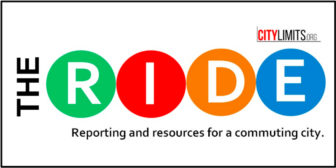
Murphy
Under the settlement, the city is required to conduct a survey of pedestrian ramps in all five boroughs, identifying those in need of accessibility upgrades and making fixes at an agreed-upon schedule.
A judge approved a lawsuit settlement Tuesday that requires New York City to take stock of its sidewalks and curbs, and commit to a plan to upgrade all street corners so they’re accessible for people with disabilities.
The settlement, approved by a judge in the Southern District of New York, stems from a class-action lawsuit filed against the city in 2014 over the state of its sidewalks and pedestrian curb ramps, which disability rights groups say are often unusable for wheelchair users or the visually impaired. They cite broken pavement and steep or missing curb cuts, as well as street corners lacking the detectable warning strips that let blind pedestrians know where a sidewalk ends.
Under the settlement, the city is required to conduct a survey of pedestrian ramps in all five boroughs, identifying those in need of accessibility upgrades and making fixes at an agreed-upon schedule, with the bulk of the work to be done within the next 15 years. The city also agreed to perform maintenance work indefinitely so ramps remain accessible, and to establish a program to track and respond to complaints from the public.
A court-appointed monitor will be assigned to ensure the city complies with the plan, according to the deal, which follows decades of advocacy on the part of the disability rights community to improve sidewalk access. In addition to the 2014 suit—filed by the Center for Independence of the Disabled, New York and two individual plaintiffs—the agreement also resolves a separate, earlier lawsuit against the city over curb cuts brought by the United Spinal Association more than two decades ago; that case was first settled in 2002.
“New York City welcomes today’s approval of the settlement and maintains its commitment to make pedestrian ramps accessible citywide,” the city’s Law Department said in a statement Tuesday. In the last three fiscal years, the city has spent more than $125 million on ramp upgrades, and has another $1.55 billion budgeted for the work for the next 10 years, according to a spokesperson. “Under this settlement, we continue that progress with a long-term, comprehensive plan to survey and upgrade ramps citywide, including the completion of installations.”
Michelle Caiola, an attorney for Disability Rights Advocates, which represented one of the plaintiffs in the case, says the survey the city is required to undertake will be the first comprehensive, citywide assessment of its curb cuts, offering a clearer picture of the obstacles disabled pedestrians face getting around the five boroughs.
Get the best of City Limits news in your inbox.
Select any of our free weekly newsletters and stay informed on the latest policy-focused, independent news.
When filing the lawsuit initially, Center for Independence of the Disabled, New York did its own survey of more than a thousand curb cuts in Lower Manhattan alone and found that more than 75 percent of them had some kind of accessibility issue.
This makes getting around those areas time-consuming, difficult—and potentially dangerous—for New Yorkers with disabilities, according to Caiola.
“To get from point A to point B…they will have to double-back, they’re going to have to take more time,” she says. “We have stories of people actually tipping over in their wheelchair and falling into the street.”









